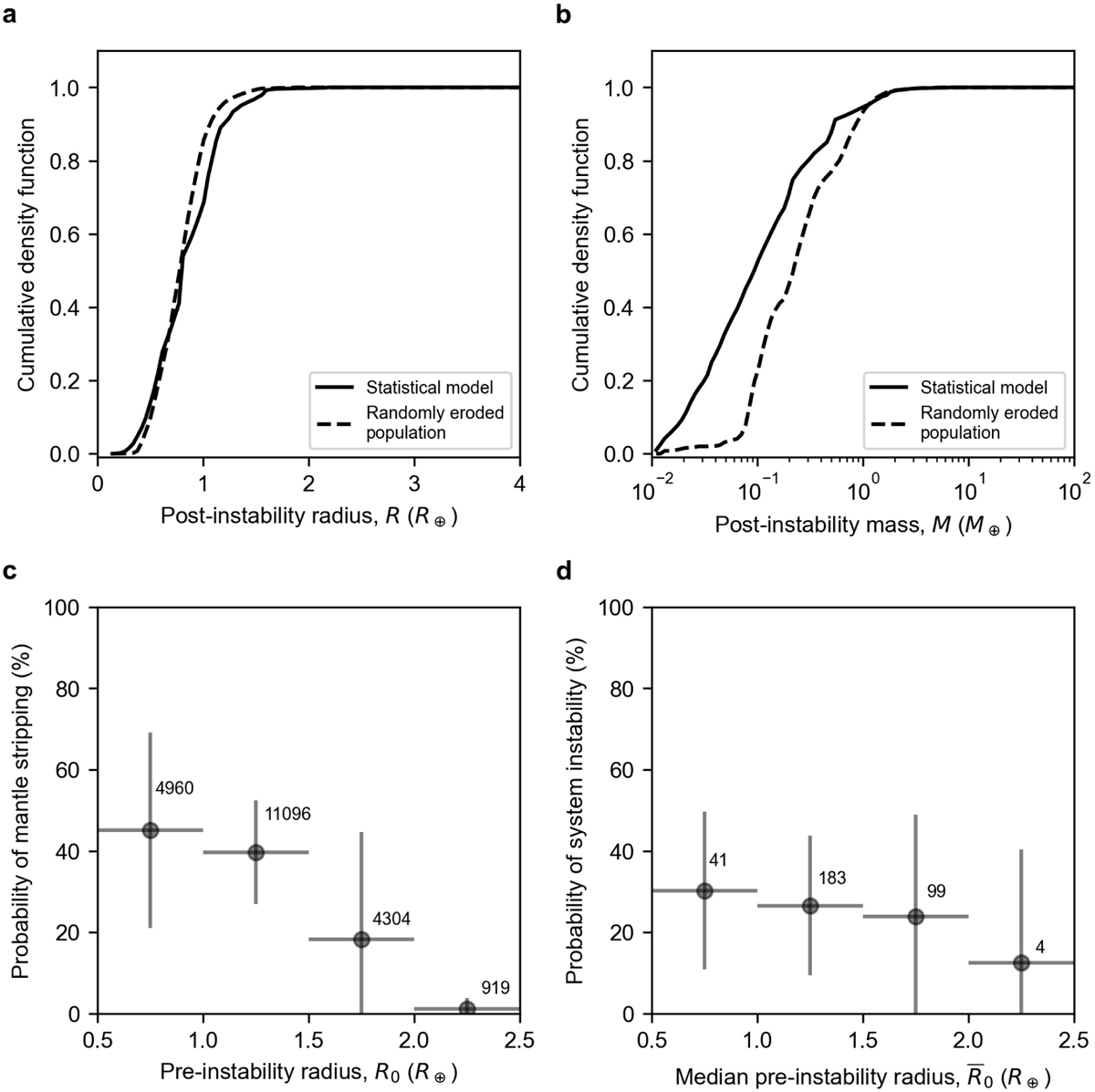Fig. 8

Download original image
Likelihood that mantle-stripping giant impacts occur as a function of size of the colliding bodies. (a) Cumulative distribution of the radii, R, of the simulated metal-rich planets compared to that of the corresponding randomly eroded population generated as described in Section 3.3. (b) Same as panel a, but for planetary masses, M. (c) Fraction of initial super-Earths in unstable compact systems that evolve into metal-rich planets (i.e., probability of mantle stripping) as a function of their initial size, R0. (d) Fraction of compact systems that experienced instability (i.e., probability of system instability) as a function of the median initial planetary size, ![]() . The value of
. The value of ![]() is representative of the typical size of planets in a compact system within 0.14 dex (1 dex = one order of magnitude; Weiss et al. 2023). In panels c and d, vertical bars indicate one standard deviation uncertainties computed across all simulation scenarios described in Table F.1. The annotated numbers indicate the total number of planets and systems, respectively, in each bin. The widths of the bins are indicated by the horizontal error bars.
is representative of the typical size of planets in a compact system within 0.14 dex (1 dex = one order of magnitude; Weiss et al. 2023). In panels c and d, vertical bars indicate one standard deviation uncertainties computed across all simulation scenarios described in Table F.1. The annotated numbers indicate the total number of planets and systems, respectively, in each bin. The widths of the bins are indicated by the horizontal error bars.
Current usage metrics show cumulative count of Article Views (full-text article views including HTML views, PDF and ePub downloads, according to the available data) and Abstracts Views on Vision4Press platform.
Data correspond to usage on the plateform after 2015. The current usage metrics is available 48-96 hours after online publication and is updated daily on week days.
Initial download of the metrics may take a while.


